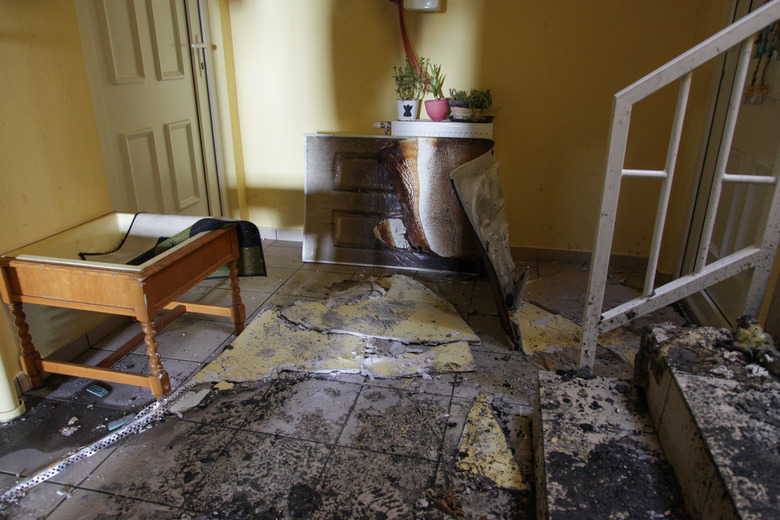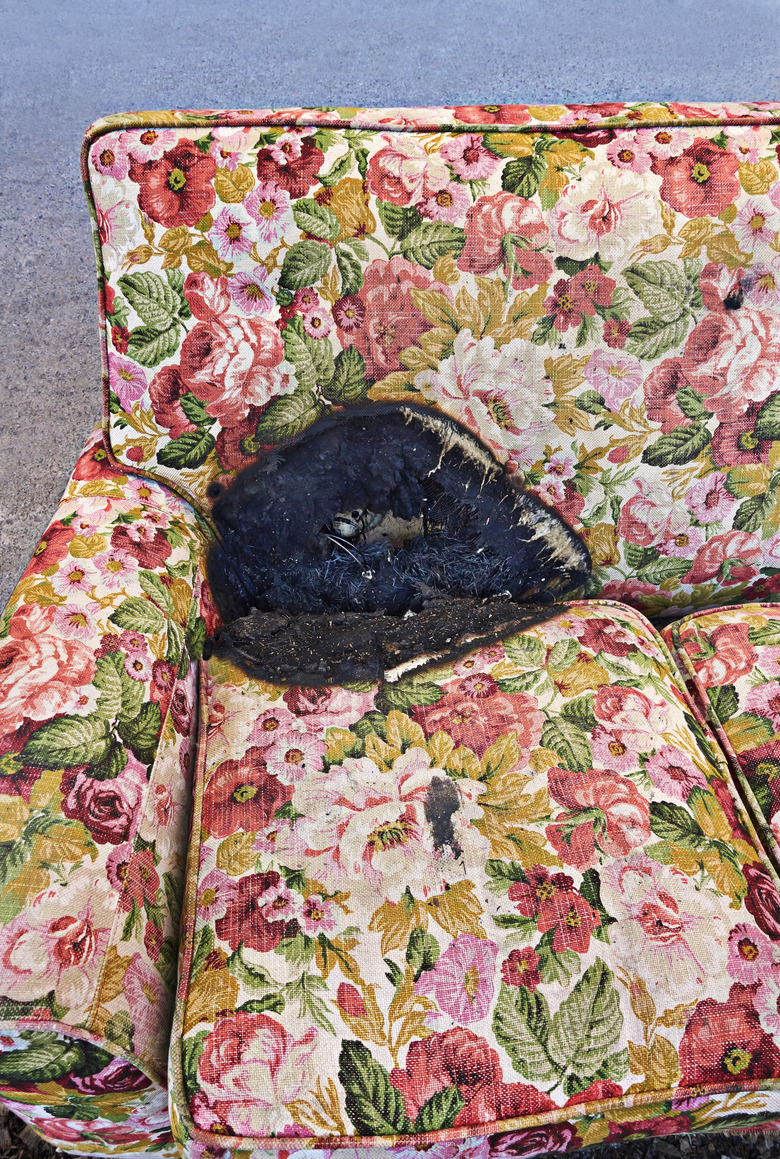Returning Home After A Wildfire — A Safety Checklist
Evacuating due to a wildfire leaves a lot of lingering uncertainty about the condition of your belongings, your home and even the roads on the way there. Though the time away may seem almost unbearable, it's important to keep a clear head during the wait and use those days to come up with a safe plan for returning home.
Wait Until It's Safe
Wait Until It's Safe
Don't give in to the temptation to check on your home simply because you think the fire has subsided. Wait until you are given the OK by local fire officials and that the evacuation orders are over. Even driving through the neighborhood before you're given the OK could prove to be dangerous, as pockets of fire may be burning near the roadways, or access may be blocked. There's a chance of live power lines dangling over roads or in yards. Stay away until you're told that it's safe to return.
Protect Yourself From Ash and Danger
Protect Yourself From Ash and Danger
When you are getting ready for your first trip back to your home after the fire, make arrangements to leave young children or even the dog with a sitter, as numerous potential hazards lurk on the property or even along the way to it. Use caution and dress to protect yourself as much as possible from debris, ash and sharp objects. Wear durable long pants, a long-sleeved shirt and boots or sturdy shoes with thick soles. Keep a flashlight handy besides the one in your phone. Bring thick work gloves and a dust mask or respirator, such as a N95 or P100, which is designed to block smoke and particulates.
If the air outdoors still smells of smoke, wear the respirator every time you're outdoors and even on the drive to your home. This is especially important if you have any respiratory conditions that may be aggravated by smoke, ash and fine particles. If you are using the heat or air conditioning in your car, set the air to recirculate rather than to bring in outdoor air if the air smells, appears smoky or contains particulate matter, such as ash.
Avoid Potential Wildfire Dangers
Avoid Potential Wildfire Dangers
Once you're cleared to return home and assess the property, proceed with caution. Some items may be smoldering inside or outside the home or along the access point to your home. In any affected area en route to or around your home, burned trees may fall or drop limbs or may even contain live embers capable of catching fire again. If the air smells or looks smoky along the way or you spot flames in the area, put on the respirator immediately. If your yard, home or the neighboring homes are visibly affected by a wildfire, wear the respirator in and around the home, especially this first time back when you aren't sure what you'll find.
Look for visible damage like downed electrical wires around the driveway and the perimeter of your home. If you spot any, do not enter the house or approach such wires. Call the power company if you spot any potential line issues that may affect your service or, even more so, your electrical safety. Also look for smoke, especially along the roof, as it is an indicator of potential fire. Look into the windows on the ground floor and check for fire or smoke inside. Excessive heat emanating from part of the home is indicative of fire. In this case, stay away.
If the area smells like natural gas, you should leave, as there may be a gas leak nearby. Call the gas company to send someone to check it out or turn off the gas before you explore your home or even the surrounding property.
Look for Sparks and Embers
Look for Sparks and Embers
If you feel your home is safe to enter after a perimeter check and you do not smell gas or sense a fire, be on the lookout for smoke, sparks and embers anyway. During daylight hours, turn on your flashlight outdoors before entering the structure, as switching it on inside could spark a fire under certain conditions. Do not turn on any household lights. Inspect the home room by room in areas that appear structurally sound, looking for smoke, embers, sparks or even ash piles that may still contain embers.
If fire burned any part of the house, there could be hot embers lurking between walls or in hidden areas, even in parts of the home with minimal visible fire damage. Proceed with caution if it looks relatively safe. If any parts of the floor or stairs appear unstable, avoid those areas, as they could be dangerous.
Discard Questionable Consumables
Discard Questionable Consumables
If your home's interior smells like smoke or appears to have fire damage, chances are that numerous items inside the house absorbed smoky odors as well, becoming hazardous materials. Discard foods that were possibly affected by fire or heat, including anything stored in cardboard boxes, such as cereal or pasta, as the packaging could absorb smoke even if the package itself looks normal.
Any foods and beverages exposed to soot or water should also be discarded because they're likely no longer safe to consume. The same holds true for medications, as they may have absorbed smoke, water or soot. Items in the refrigerator and freezer should also be discarded if there have been power outages for more than a day or for an unknown amount of time.
Do not drink the home's tap water during this time either, as it may not be safe for consumption. Contact your local water supplier to find out about boil advisories issued for the area, as the company tests water to determine when the main supply of water is safe to consume again. Even if the company deems it safe, if the water smells unusual or doesn't run clear, don't drink it. Contact the water company for further instructions. If your water lines and plumbing are intact, it's fine to flush toilets or test the taps for water pressure, as these are all concerns you'll have to check out once you move back in anyway.
Take Plenty of Pictures
Take Plenty of Pictures
Take pictures of damaged items, including the home itself, for insurance purposes. This even comes in handy for items you plan to discard due to smoke damage, such as a mattress, clothing or foods, so that you'll have visual evidence for the insurance company. Don't discard any items until after you've spoken to an insurance agent to ensure you document items in a manner it will accept.
Air Out or Wash Belongings
Air Out or Wash Belongings
Furniture, drapes, clothing, area rugs and any other porous or fabric items absorb smoke odors even if there's no sign of actual fire damage in the room. If the items themselves aren't physically damaged, you may be able to successfully air them out to remove the smoky stench. Open all windows and doors if possible to help air out the entire house as long as the outdoor air isn't full of ash and no longer smells of smoke. If the outdoor air quality is poor, wait until it improves before airing anything outside or opening all the windows.
Take upholstered or even wood furniture outdoors to expose it to fresh air and breezes once the air is smoke-free. The same can be done with shoes, toys and virtually anything else that can be carted outdoors for cleaning up. Wipe down items with a damp cloth, rinsing the cloth regularly in fresh water. A capful or so of vinegar in a bucket of clean water helps the cloth remove odors from items that are easy to wipe down, such as plastic toys and furniture or even ceramics. The vinegar and water wipe-down is also good for walls, cabinets and other surfaces in the home that were affected by smoke.
Virtually every kitchen utensil and tool must be washed before use if the home smells of smoke. All washable clothing, bed linens and other items should be washed before you use them again once your water supply is clear, and you're almost ready to move back into your home.

